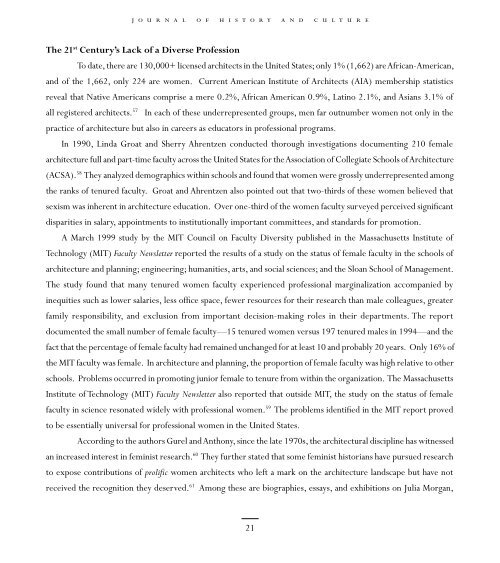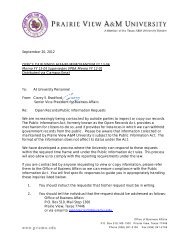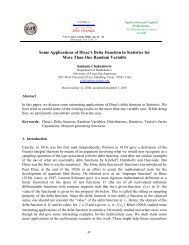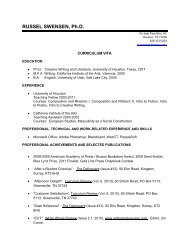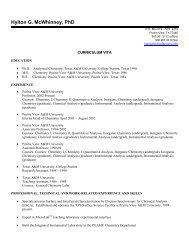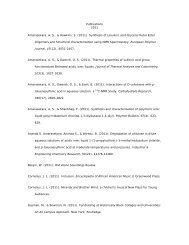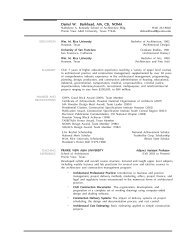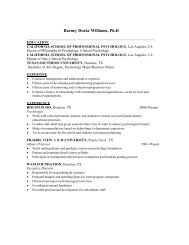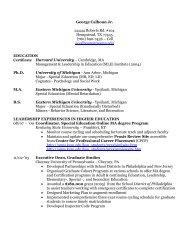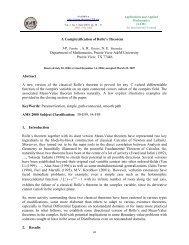Journal of History and Culture Journal of History and Culture
Journal of History and Culture Journal of History and Culture
Journal of History and Culture Journal of History and Culture
You also want an ePaper? Increase the reach of your titles
YUMPU automatically turns print PDFs into web optimized ePapers that Google loves.
j o u r n a l o f h i s t o r y a n d c u l t u r e<br />
The 21 st Century’s Lack <strong>of</strong> a Diverse Pr<strong>of</strong>ession<br />
To date, there are 130,000+ licensed architects in the United States; only 1% (1,662) are African-American,<br />
<strong>and</strong> <strong>of</strong> the 1,662, only 224 are women. Current American Institute <strong>of</strong> Architects (AIA) membership statistics<br />
reveal that Native Americans comprise a mere 0.2%, African American 0.9%, Latino 2.1%, <strong>and</strong> Asians 3.1% <strong>of</strong><br />
all registered architects. 57 In each <strong>of</strong> these underrepresented groups, men far outnumber women not only in the<br />
practice <strong>of</strong> architecture but also in careers as educators in pr<strong>of</strong>essional programs.<br />
In 1990, Linda Groat <strong>and</strong> Sherry Ahrentzen conducted thorough investigations documenting 210 female<br />
architecture full <strong>and</strong> part-time faculty across the United States for the Association <strong>of</strong> Collegiate Schools <strong>of</strong> Architecture<br />
(ACSA). 58 They analyzed demographics within schools <strong>and</strong> found that women were grossly underrepresented among<br />
the ranks <strong>of</strong> tenured faculty. Groat <strong>and</strong> Ahrentzen also pointed out that two-thirds <strong>of</strong> these women believed that<br />
sexism was inherent in architecture education. Over one-third <strong>of</strong> the women faculty surveyed perceived significant<br />
disparities in salary, appointments to institutionally important committees, <strong>and</strong> st<strong>and</strong>ards for promotion.<br />
A March 1999 study by the MIT Council on Faculty Diversity published in the Massachusetts Institute <strong>of</strong><br />
Technology (MIT) Faculty Newsletter reported the results <strong>of</strong> a study on the status <strong>of</strong> female faculty in the schools <strong>of</strong><br />
architecture <strong>and</strong> planning; engineering; humanities, arts, <strong>and</strong> social sciences; <strong>and</strong> the Sloan School <strong>of</strong> Management.<br />
The study found that many tenured women faculty experienced pr<strong>of</strong>essional marginalization accompanied by<br />
inequities such as lower salaries, less <strong>of</strong>fice space, fewer resources for their research than male colleagues, greater<br />
family responsibility, <strong>and</strong> exclusion from important decision-making roles in their departments. The report<br />
documented the small number <strong>of</strong> female faculty—15 tenured women versus 197 tenured males in 1994—<strong>and</strong> the<br />
fact that the percentage <strong>of</strong> female faculty had remained unchanged for at least 10 <strong>and</strong> probably 20 years. Only 16% <strong>of</strong><br />
the MIT faculty was female. In architecture <strong>and</strong> planning, the proportion <strong>of</strong> female faculty was high relative to other<br />
schools. Problems occurred in promoting junior female to tenure from within the organization. The Massachusetts<br />
Institute <strong>of</strong> Technology (MIT) Faculty Newsletter also reported that outside MIT, the study on the status <strong>of</strong> female<br />
faculty in science resonated widely with pr<strong>of</strong>essional women. 59 The problems identified in the MIT report proved<br />
to be essentially universal for pr<strong>of</strong>essional women in the United States.<br />
According to the authors Gurel <strong>and</strong> Anthony, since the late 1970s, the architectural discipline has witnessed<br />
an increased interest in feminist research. 60 They further stated that some feminist historians have pursued research<br />
to expose contributions <strong>of</strong> prolific women architects who left a mark on the architecture l<strong>and</strong>scape but have not<br />
received the recognition they deserved. 61 Among these are biographies, essays, <strong>and</strong> exhibitions on Julia Morgan,<br />
21


